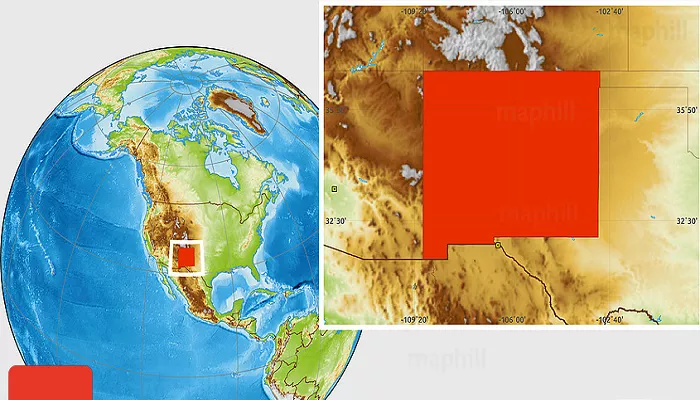New Mexico, often referred to as the “Land of Enchantment,” is a state rich in history and natural beauty. Located in the southwestern region of the United States, understanding its geographical position provides insight into its cultural and historical significance.
Geographical Location
New Mexico is a landlocked state bordered by four U.S. states and two Mexican states:
- North: Colorado
- East: Oklahoma and Texas
- South: Chihuahua and Sonora (Mexican states)
- West: Arizona
Neighboring States and Regions
To further understand New Mexico’s location, let’s explore its neighboring regions:
- Colorado: To the north, Colorado shares a border with New Mexico characterized by diverse terrains, including mountains and plains.
- Oklahoma and Texas: To the east, these states border New Mexico, offering a mix of cultural influences and landscapes.
- Chihuahua and Sonora: To the south, these Mexican states border New Mexico, providing a rich blend of cultural and historical ties.
- Arizona: To the west, Arizona shares a border with New Mexico, featuring deserts and mountainous regions.
Major Cities and Transportation
New Mexico’s major cities include:
- Albuquerque: The largest city, located centrally, serves as a cultural and economic hub.
- Santa Fe: The state capital, known for its historic architecture and vibrant arts scene.
- Las Cruces: Situated in the southern part of the state, it’s known for its proximity to the Mexican border and agricultural significance.
The state’s transportation infrastructure includes major highways such as Interstates 10, 25, and 40, facilitating east-west and north-south travel. Additionally, U.S. Highways like 54, 60, and 285 connect various regions within the state.
Natural Features
New Mexico’s diverse landscape includes:
- Rio Grande River: Flowing from north to south, it serves as a vital water source and forms part of the southern border with Texas.
- Rocky Mountains: Stretching into the northern part of the state, they offer recreational opportunities and scenic beauty.
- Desert Regions: The southern and western areas consist of deserts, including parts of the Chihuahuan Desert.
Cultural and Historical Significance
The state’s location has made it a crossroads of various cultures, including Native American, Hispanic, and Anglo influences. This blend is evident in its architecture, traditions, and festivals. Historical sites like Chaco Canyon and the Taos Pueblo reflect the rich heritage of the region.
Interactive Maps and Resources
For a more detailed exploration of New Mexico’s geography, consider utilizing interactive maps provided by the New Mexico Department of Transportation. These maps offer insights into roadways, points of interest, and other geographical features.
Conclusion
New Mexico’s unique position in the southwestern U.S. offers a tapestry of cultural, historical, and natural wonders. Its borders with neighboring states and countries have shaped its identity, making it a fascinating area to study and explore.

